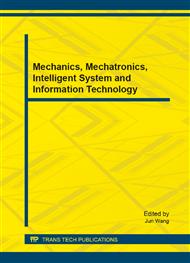p.381
p.385
p.393
p.401
p.407
p.414
p.420
p.425
p.429
A Compressed Sensing Improvement Algorithm Based on Power Quality Transient Disturbance Signal
Abstract:
Traditional power quality signal samples are based on the Nyquist sampling theory. Because of the existence of disturbance signal for the presence of power, it requires two times higher than the sampling frequency of the original signal, resulting in many problems, such as a high cost of hardware. Compressed sensing algorithm abandoned the characteristics of Shannon theorem, using a lower sampling frequency and the less amount of the signal to reconstruct the signal, with the method of a loss compression, which can effectively solve this problem. A team in Beijing University of Chemical Technology has done a deep research in this direction and proposed the total variation gradient reduction algorithm, which has good effects on reduction. But the algorithm runs slower and needs higher sample volumes of signal. Therefore, this paper presents a modified algorithm based on Nesta algorithm to reduce the amount of data sampled of power quality signal, the complexity of the algorithm to improve the algorithm’s speed. The modified algorithm has a very important value in practical applications. This paper has carried out simulations in matlab, the results of the simulation show that this method is accurate and applied.
Info:
Periodical:
Pages:
407-413
Citation:
Online since:
August 2014
Authors:
Price:
Сopyright:
© 2014 Trans Tech Publications Ltd. All Rights Reserved
Share:
Citation:


